Hillsborough stadium named on Historic England list
- Published
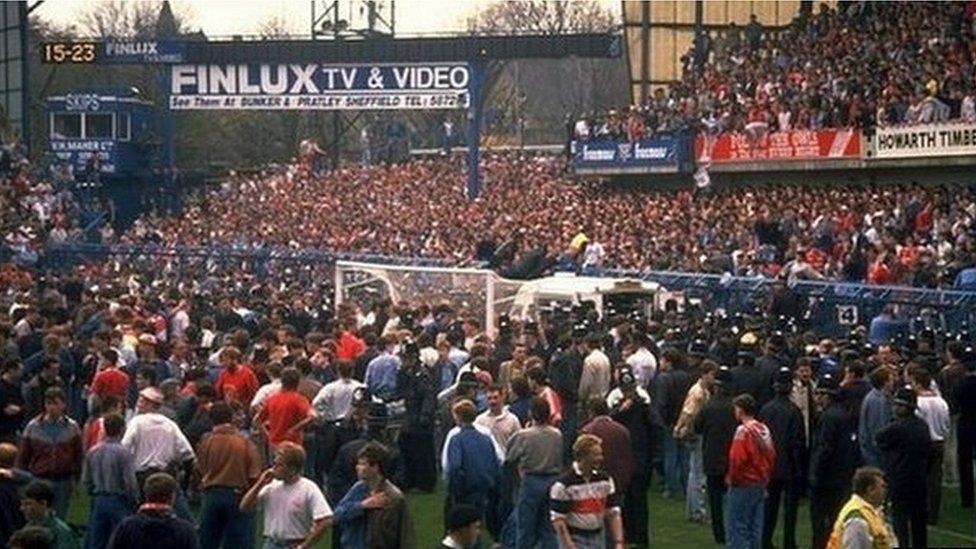
Ninety-six football fans died following crushing at Hillsborough stadium in 1989
Hillsborough football stadium has been included in a list of locations and defining events that "best represent the history of England".
Historic England, external is compiling A History of England in 100 places "to encourage debate about which places best tell the country's national story".
The stadium, the site of the 1989 football disaster, was included in an initial shortlist of 10 locations.
The project is being put together based on public nominations., external
Ninety-six football fans died following crushing at Hillsborough during an FA Cup semi-final match between Liverpool and Nottingham Forest.
Families of the victims later campaigned for a new inquiry into the deaths, and in 2016 new inquests found the fans had been unlawfully killed.
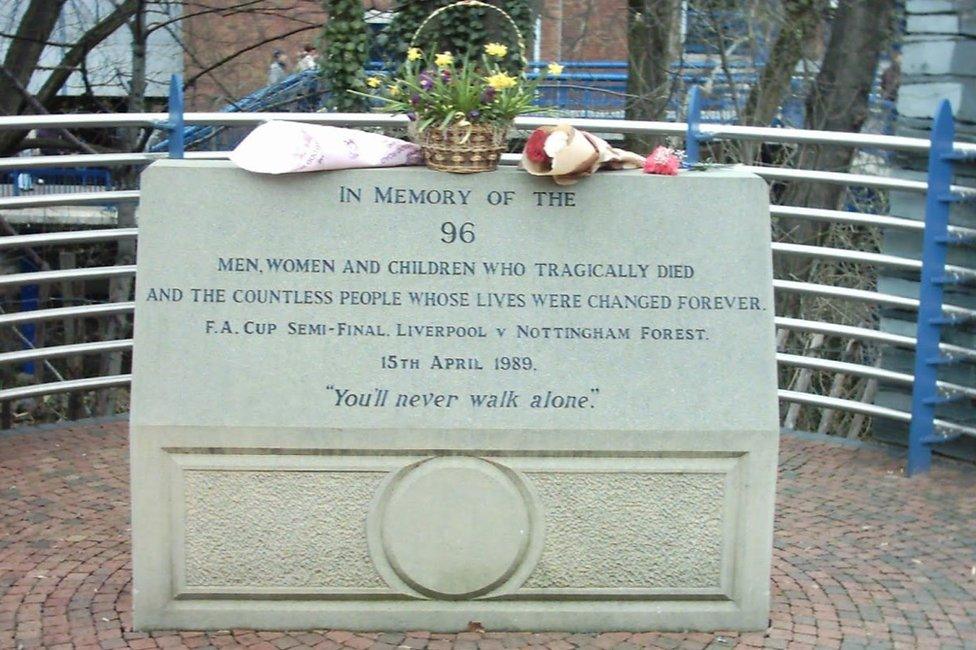
A memorial to the victims of the disaster at Hillsborough stadium
The inquests concluded the supporters themselves were not to blame for the disaster.
Historian Mary Beard, who judged nominations for the shortlist, said: "This is such a powerful symbol of human tenacity in pursuit of justice after terrible loss of life."
Ten locations have been shortlisted under a category entitled Loss and Destruction.
Places in other categories, external including Science and Discovery and Travel and Tourism are yet to be decided.

Greyfriars Monastery in Suffolk is on the shortlist
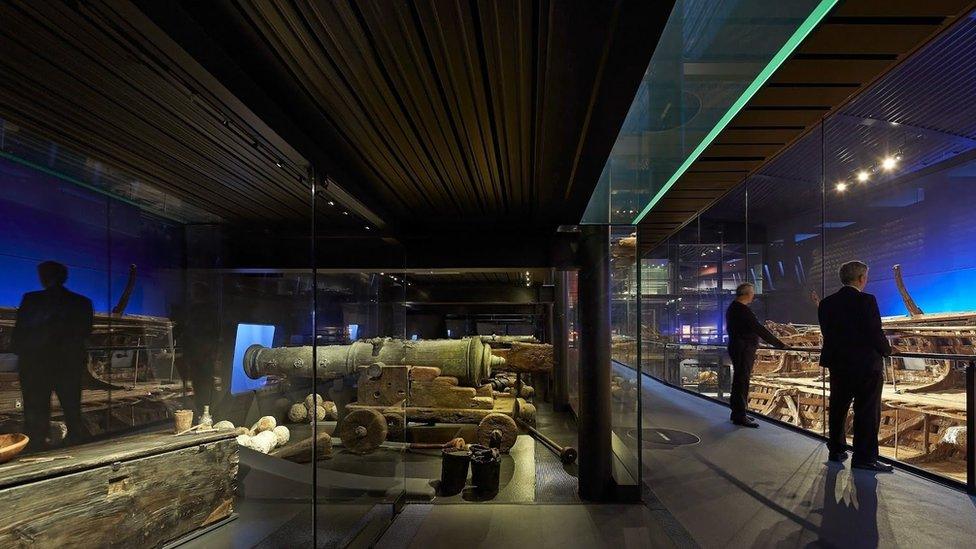
Remnants of the wrecked Mary Rose warship remain on show in Portsmouth
A Historic England spokesman said: "The places identified as the sites of important events during this campaign may not be definitive.
"We have chosen the spots that are widely agreed to have witnessed historic events. History is often disputed and part of our job is to raise a debate and help people to engage with their history."
Other places in the Loss and Destruction category include the ruins of Whitby Abbey in North Yorkshire, the Must Farm Bronze Age settlement in Cambridgeshire and Euston Arch in London's King's Cross.

The Loss and Destruction shortlist in full
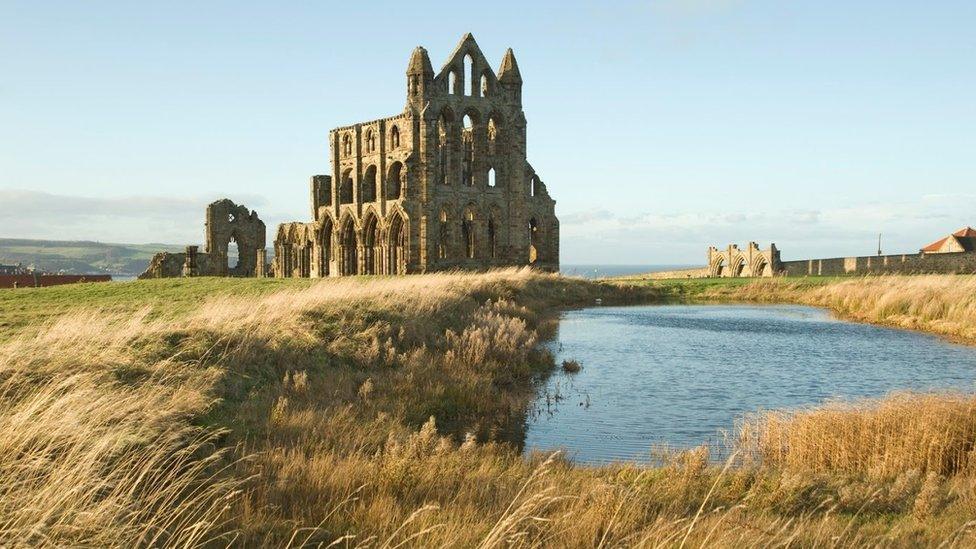
The ruins of Whitby Abbey in North Yorkshire
Hillsborough football stadium
Wreck of the SS Mendi, off Saint Catherine's Point, Isle of Wight
Farfield Inn, Sheffield
The Crystal Palace, Crystal Palace Park, London
The Monument, Pudding Lane, London
Must Farm Bronze Age settlement, Whittlesey, Cambridgeshire
Ruins of Greyfriars Monastery and the village of Dunwich, Suffolk
The Mary Rose, Portsmouth
Euston Arch, King's Cross, London
Ruins of Whitby Abbey, North Yorkshire

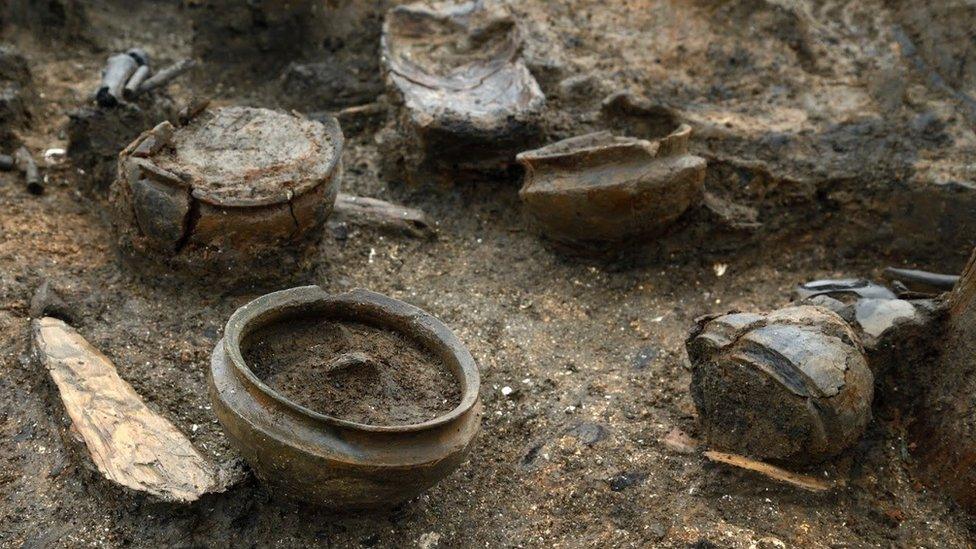
Must Farm Bronze Age settlement in Cambridgeshire has been dubbed "Britain's Pompeii"

The Euston Arch once stood outside Euston station in London but was dismantled in the 1960s, despite public opposition
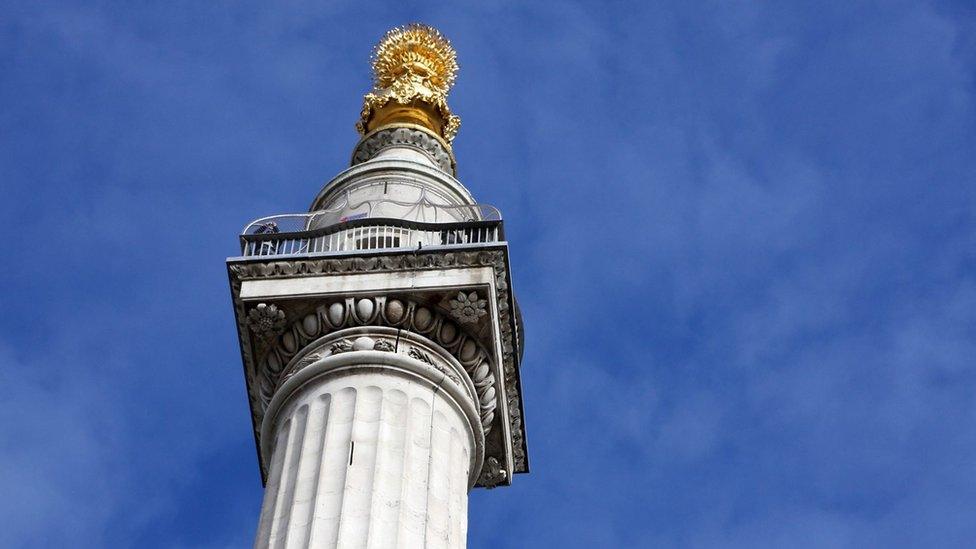
The Monument stands close to the site of the outbreak of the Great Fire of London of 1666
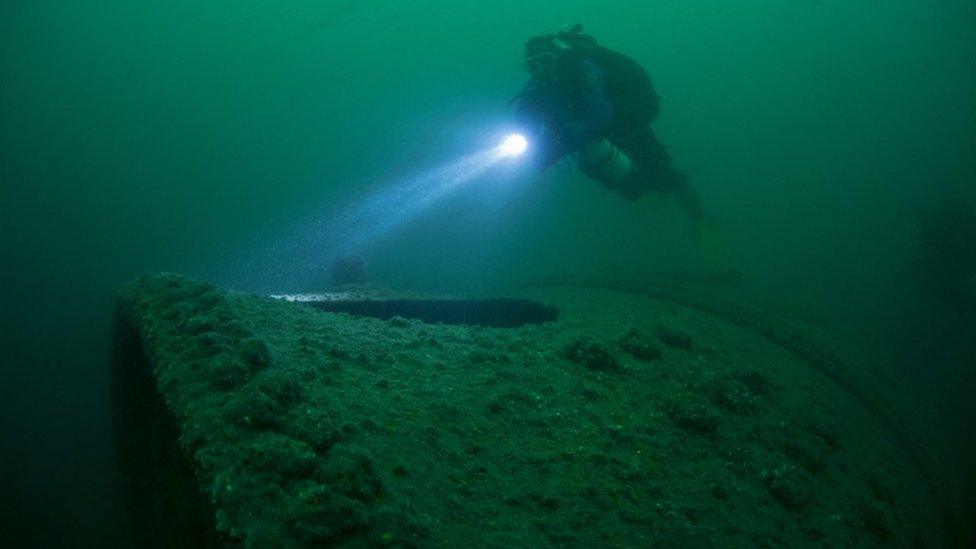
The wreck of the SS Mendi has been designated an official military maritime grave